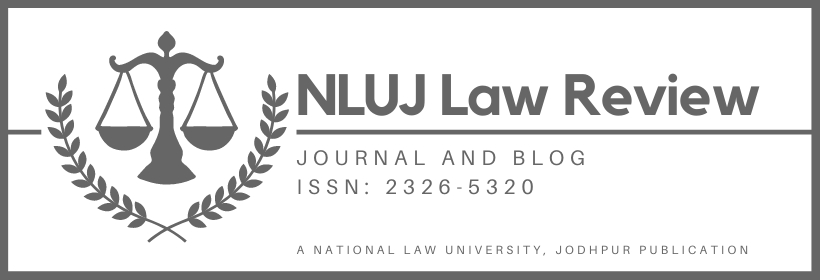In a recent ruling, the Supreme Court of India (“SC”) has broadened the scope of the ‘doctrine of impossibility’, which is traditionally invoked in the contractual regime, the SC observed that the ‘doctrine of impossibility’ would be equally applicable to court orders. This decision was in response to the slew of directions issued by the Allahabad High Court to improve the state’s health infrastructure. These directions, as pointed out by the Solicitor-General, proved to be difficult, almost impossible to implement. Therefore, the two-Judge bench of the SC decided to give the directions a flavour of an “advice of the Court” rather than considering them to be the High Court’s mandate.
The Doctrine of Impossibility
The Doctrine of Impossibility stems from the Latin maxim, lex non cogit ad impossibilia, signifying that ‘a man cannot be compelled to do what is impossible’. The genesis of the doctrine is rooted in the law of contracts. Statutorily enshrined in Section 56 of the Indian Contract Act, 1872, this provision allows contracts to be set aside due to supervening impossibility preventing its performance. This, however, is different from a force majeure clause which relieves the contractual obligation to perform only in an identified ‘force majeure event’ earmarked in the contract, whereas ‘impossibility’ covers other unforeseen circumstances that are not covered under the force majeure clause.
The courts in the country were initially reluctant to apply this doctrine in the context of administrative law; however, various Supreme Court decisions have paved the way for this doctrine as a principle under administrative law as well. For instance, in the Nagar Palika Parishad case, the Uttarakhand High Court rejected the defence of impossibility put forth by the state on the grounds that a doctrine governing the private rights of individuals could not be extended in cases that impose a constitutional obligation on the State. However, a year later, in a similar case relating to re-election to the Gujarat Legislative Assembly, the SC observed that the maxim lex non cogit ad impossibilia was to be read with impotentia excusat legem which excuses non-performance of certain acts due to the inherent impossibility. In this case, the caveat imposed by the SC was that the non-performance should be a result of an act of God whereby the interested party is unable to perform his duties as mandated by the statute. The SC followed this line of reasoning in the Narmada Bachao Andolan case, wherein the SC further added that merely because a mandatory obligation required by law is not performed due to unforeseen circumstances, it would not lose its “mandatory character”.
Nevertheless, the invocation of this defence has been extended to cover various “extraordinary circumstances” in different contexts. For instance, in Kesharben Murji Patel v. State of Maharashtra, an executive inaction on the part of the scrutiny committee resulted in the inability of the petitioner to contest in councillor elections. Similarly, in the case of Inter College v. State of U.P., the students of Class XI were unable to fill the registration forms within the prescribed time period due to non-availability of forms caused by the respondent. Other examples of extraordinary circumstances include non-compliance with mandatory duties imposed on statutory bodies due to new amendments and inability to comply with certain rules due to unforeseen administrative decisions such as in the case of Chandra Kishore Jha v. Mahavir Prasad, wherein the petitioner was unable to file his election petition before the High Court due to a sudden announcement of a court holiday. Thus, the courts have strictly interpreted the doctrine of impossibility and have excused non-performance on a case-to-case basis.
Exploring the Proposition of Doctrine of Impossibility in the Context of Court Orders
In the present case, the Allahabad High Court issued several directions such as providing minimum number of ambulances in graded towns, requiring new firms to manufacture vaccines by borrowing the formula from existing manufacturers, providing oxygenated beds in all state nursing homes and upgradation of state medical colleges within a certain period. In an appeal before the SC, the Solicitor-General argued that these directions were nearly impossible to implement and the directions regarding the manufacture of vaccines could have international ramifications. Thus, the SC while accepting the submissions of the Solicitor-General observed that courts should weigh in the possibility of implementation of directions issued by them. In this context, the SC invoked the doctrine of impossibility terming the Allahabad High Court’s order as “impossible”.
The application of the doctrine to court orders reflects a shift in the non-performance of a statutory obligation to a prospective assumption of non-compliance with the court’s directions by the Executive. The scope of issuing directions by the courts, especially in writ petitions and public interest litigations (PILs), would be limited in the context of ‘feasibility of implementation’ or ‘apparent impossibility’ as observed in the present case. The counter duty imposed indirectly by the SC on the High Courts might create a negative impetus in entertaining certain suits. On the other hand, this decision may have a significant impact on ensuring that High Courts do not exceed their judicial wisdom while issuing directions.
The implications of the doctrine on Public Interest Litigations
Courts often function within their boundaries to enforce directions for public welfare. Although some of these directions may be stringent, they go a long way in ensuring that states wake up to the seriousness of the matter concerned. Courts generally take into account the response of the Executive before issuing directions to them. Thus, when an assumed impracticality comes into play, the courts’ directions, now considered merely an “advice of the court”, is a retrograde step that undermines the authority of the court in matters of public importance. In addition to this, it would lead to a lack of clear demarcation between the mandatory directions issued by the courts and the advice or opinions given in a general context, which would make way for the Executive to excuse themselves from the directions of the court.
As one of the three pillars of democracy, courts are often approached to ensure that states fulfil their responsibilities owed to the citizens. This, however, does not excuse the governments for failing their duties on the grounds of impossibility and impracticality; states may argue that they are unable to perform their statutory duties due to lack of funds. This was recently disapproved by the National Green Tribunal which rejected the argument of the State that a lack of funds prevented them from controlling the rampant environmental pollution. It can be inferred from this case that although a lack of funds can lead to “difficulties” in the implementation of environmental policies, it certainly cannot be considered to be “impossible” as there is a pre-existing duty on the government to address these problems by prioritising them and allocating a budget to meet these requirements. Therefore, such directions cannot be circumvented by claiming ‘impossibility’ or impracticality’ even if it appears to be difficult to implement.
Conclusion
The SC’s observation in the stay order appears to visibly set the contours of the functioning of lower courts in dire circumstances. It is not to say that all courts do not overstep their boundaries; however, imposing a doctrine that is largely applied in the context of executive actions on to the judicial decision-making would dilute the scope and implications of directions of the courts. In unprecedented situations, such as the Covid-19 pandemic, where the fundamental right to life is being grossly violated due to ineffective administrative action, the high courts have taken it upon themselves to issue necessary guidelines to bridge such gaps. When courts issue such guidelines of public importance, the coercive nature of such directions can achieve the intended results, which would be unlikely if it is advisory in nature. Although the SC had it in good intentions to restrain the infeasible directions issued by the Allahabad High Court, the Bench ought to have avoided the application of the doctrine to court orders factoring in the possible implications and abuse by the Executive.
This article has been written by Aisiri Raj and Vishnu Mohan Naidu, students at School of Law, Christ University, Bangalore.


